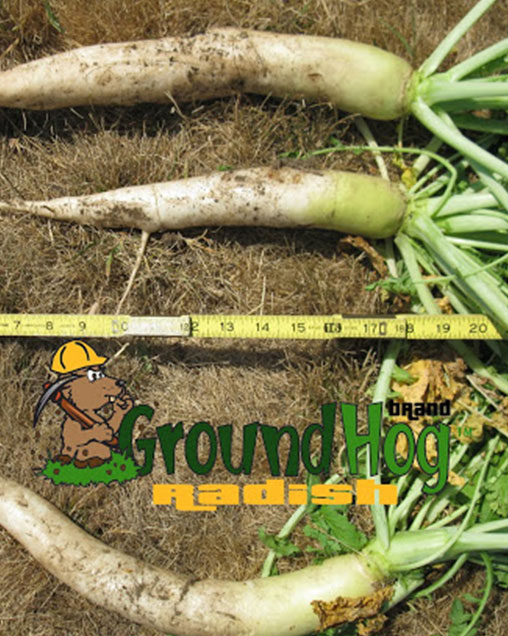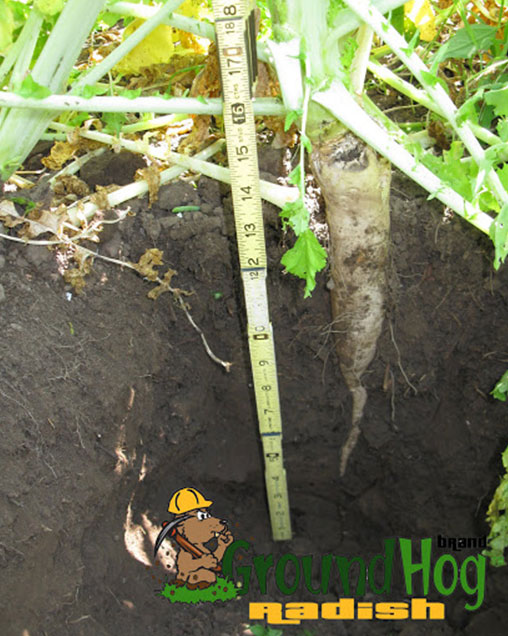Description
GroundHog Radishes produces more root mass than oil seed radish or mustards. According to University of Maryland soil scientist, Ray Weil, a radish cover crop will capture 150 to 200 pounds of nitrogen per acre before winter killing. Upon decomposition, the nitrogen uptake becomes available to the next cash crop. GroundHog Radishes will scavenge other nutrients as well.
GroundHog Radishes have 2-4 times the amount of roots as rye or rape (10″-20″). Upon decomposition, these roots leave large holes in the ground that improve water infiltration and soil aeration.
Use as a cover crop to “mine” nitrogen and other nutrients that normally would leach out of your soils. GroundHog Radishes can also be used for weed suppression. When planted in August, forage radish cover crops emerged at the same time as the weeds but grow rapidly forming a closed canopy by the beginning of October, a month before spring oat and fall rye cover crops. During the winter, radish will decompose leaving a thin film of residue covering the soil.
Seed August thru September at 10-12 lbs per acre. Broadcasted, or ¼ inch deep if drilled. Aerial seeding into soybeans before leaf drop. Apply 60 units of N for best root growth potential. GroundHog Radishes don’t like wet spots and will winter kill with temperatures in the teens.
GroundHog Radishes can be planted with other brassicas, clovers and grasses. As with all brassica crops, GroundHog Radishes should be used in rotation with other species.
LINKS:


